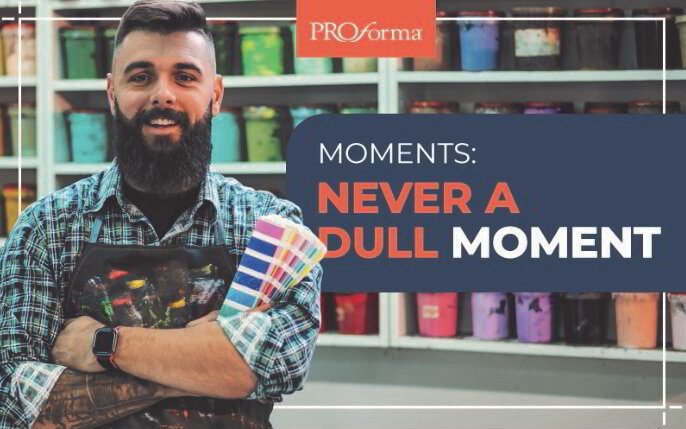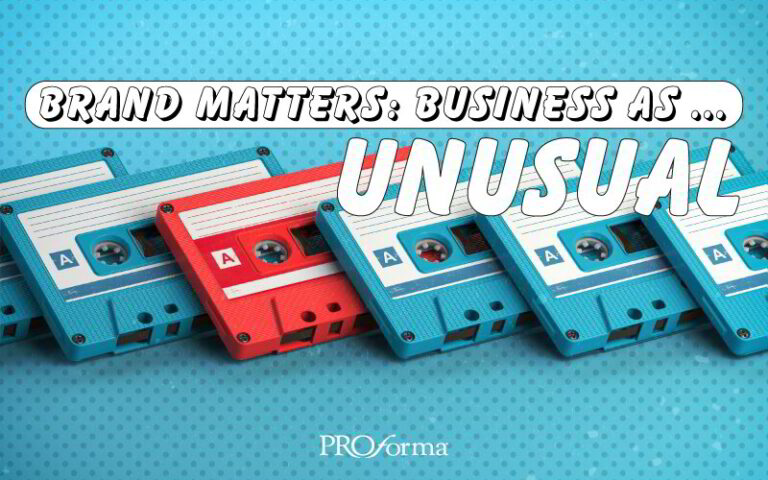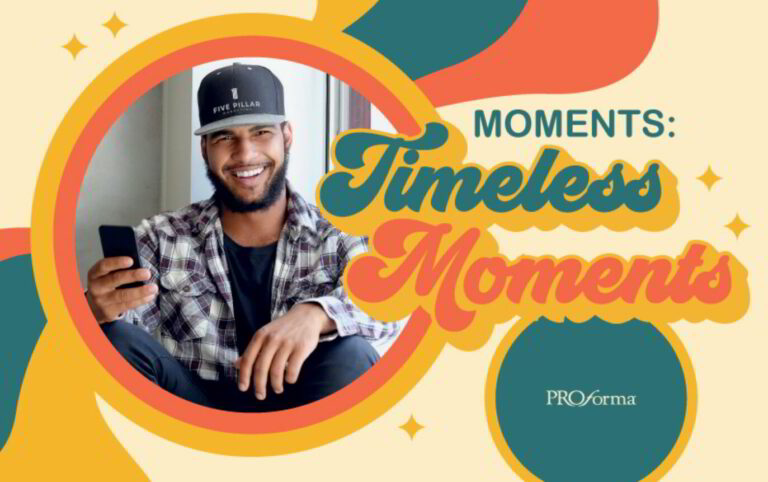Moments: Never a Dull Moment
Print is everywhere! Print provides unlimited opportunities to reach your customers in ways that center around them. But the print industry has largely evolved in recent years, and new developments in the print arena mean there are even more chances to incorporate print collateral in your business. In this blog post, we’ll discuss:
Print Awareness
Technology, Sustainability, and Packaging
Financial Opportunities
Print Awareness
The possibilities of print are infinite! From brochures and flyers to business cards, banners, labels, and packaging, the array of print opportunities available is truly vast. Moreover, each of these print materials can be tailored to suit the needs of customers. Print is a reliable medium that customers trust, as indicated by a recent survey in which 82% of respondents expressed a preference for companies that use custom print materials, such as business cards, brochures, and other branded items.
For example, a brochure can be designed to provide customers with all the information they need to make an informed purchase decision, including details about the product, features and benefits, and reviews or testimonials from previous customers. Flyers represent yet another print opportunity that can be leveraged to promote products and services. By crafting visually appealing flyers that feature compelling calls to action, such as visiting a website or dialing a phone number, businesses can entice potential customers to take action. Business cards, which are an indispensable component of any business, can also be customized to create a unique and eye-catching impression. A well-designed business card can provide customers with all the relevant contact information and simplify the process of reaching out to the business. The examples go on and on, but ultimately print provides a tangible way to get information and products straight into the customer’s hands in ways that can be tailored to them and that they inherently trust.
Technology, Sustainability, and Flexible Packaging
As with any industry, print has evolved over the years to stay relevant and keep up with the latest trends. In recent years, advancements in technology have revolutionized the print industry. Digital printing has enabled businesses to generate premium print materials quickly and efficiently, while simultaneously reducing costs and minimizing environmental impact. Other innovations include QR codes, which you can now find just about anywhere you look. Developments like QR codes, augmented reality, and fragrance incorporation allow for more interactive and immersive experiences for customers.
In recent years, sustainability has emerged as a significant topic of discussion, and the print industry, which has historically been linked to excessive waste and environmental harm, has shifted its focus to prioritize sustainable practices. Nowadays, many print materials are made using recycled paper or biodegradable inks, and printing processes that limit paper waste have been adopted to foster a more environmentally friendly print sector. Additionally, these changes have resulted in more profitable outcomes.
Another major shift in print has been the rise of flexible packaging. It has become an increasingly popular choice for businesses looking to reduce their environmental impact and offers a more convenient and user-friendly experience for their customers. Flexible packaging is lightweight, easy to open and close, and highly customizable to fit a wide range of products and designs. In fact, the global flexible packaging market is expected to reach $336.7 billion by 2026!(2) With all that in mind, it’s evident that print is rapidly evolving and holds solutions for the present as well as the future.
Opportunities
Print presents a plethora of possibilities for not only customization and creativity, but also monetary gain through its effectiveness in advertising. One way to monetize print is by offering advertising space in brochures, flyers, and other print materials. This can be a particularly effective strategy for businesses that target a specific audience. For example, a business that sells sports equipment could seek ad space in a brochure that is distributed at a local sporting event.
Another way to monetize print is by offering customized print materials. Businesses can offer personalized direct mail or posters that are custom-tailored to the needs and preferences of their target market. This strategy can be particularly successful for companies that cater to niche markets or offer luxurious or high-end products and services. By utilizing customized print materials, businesses can effectively communicate their unique value proposition and set themselves apart from their competitors.
The numbers are there to prove print is effective in marketing. Materials like brochures and catalogs have longer lifespans than digital marketing materials, are more likely to be remembered, and can even improve brand recall. Recent studies have found that people who read the information in print formats are able to recall it better than those who read the same information in a digital format.
Print projects are rarely one-time opportunities. Most printed items, envelopes, letterheads, retail signage, product labels, catalogs, note pads, are disposable and will need to be replenished or replaced. This provides ongoing revenue and establishes potential revenue opportunities for any other type of print project that arises





